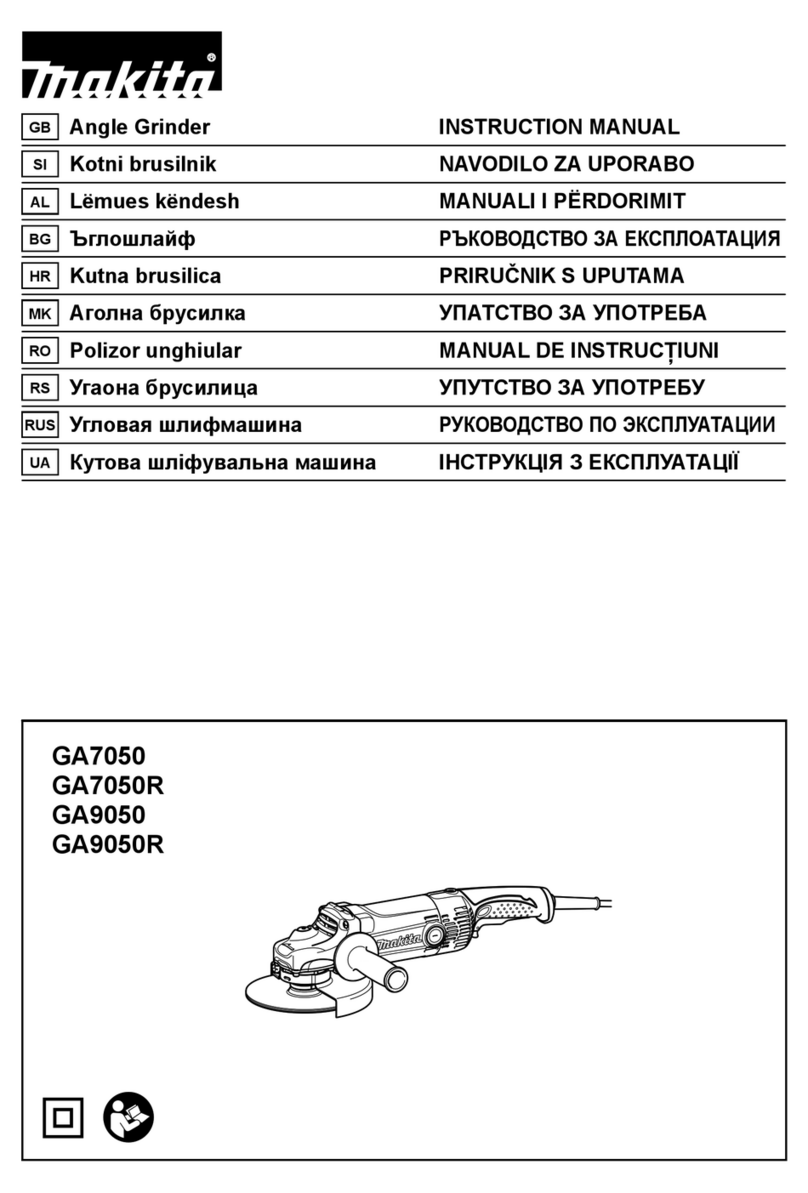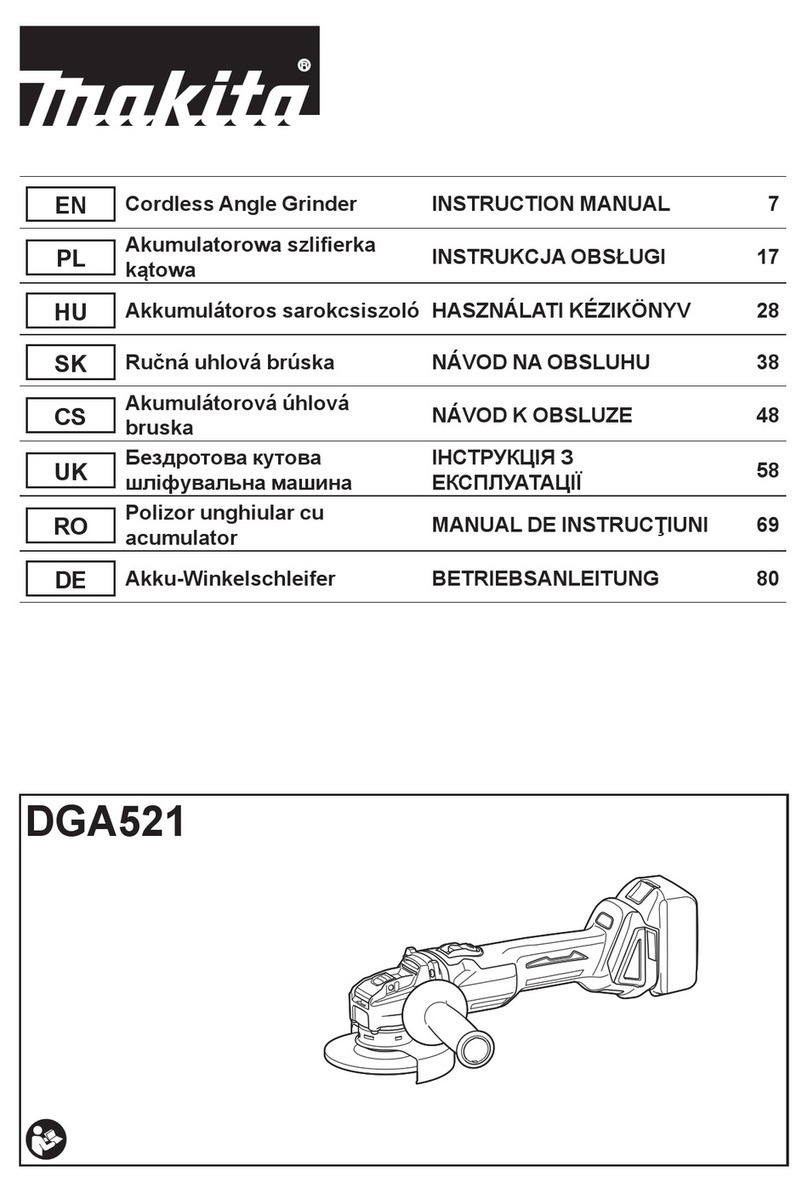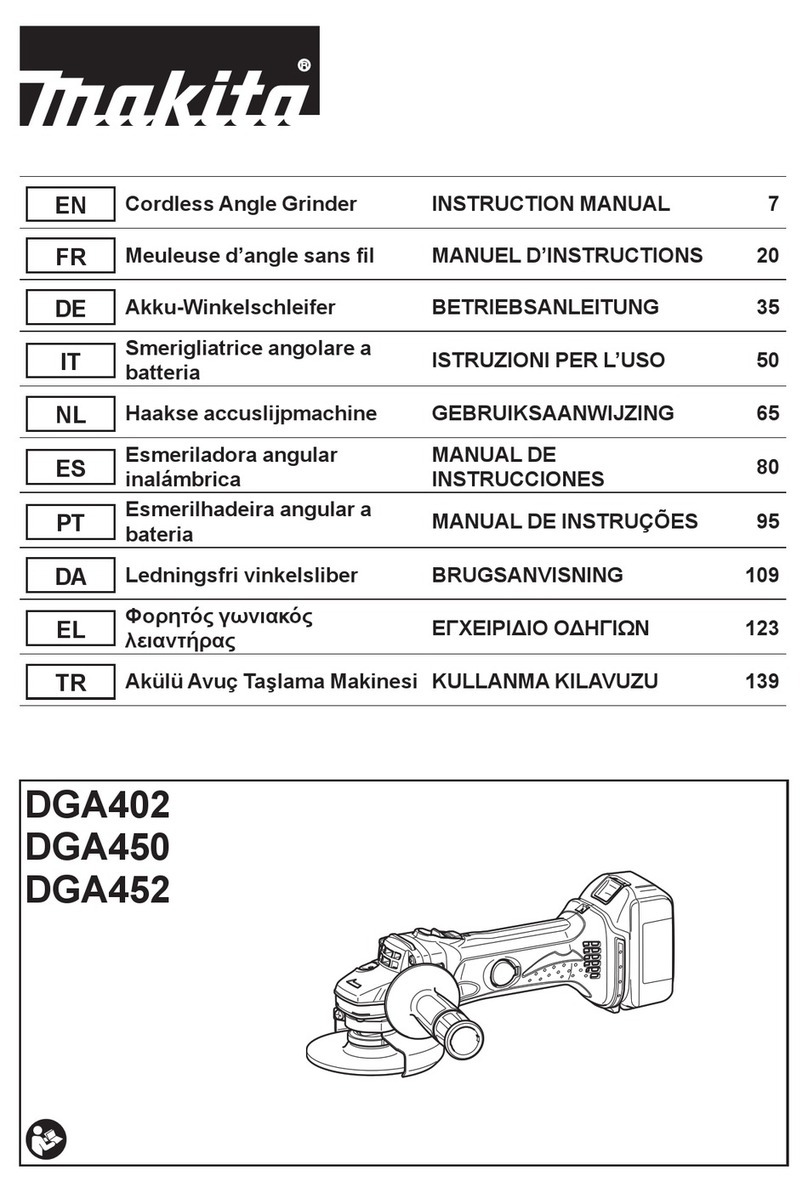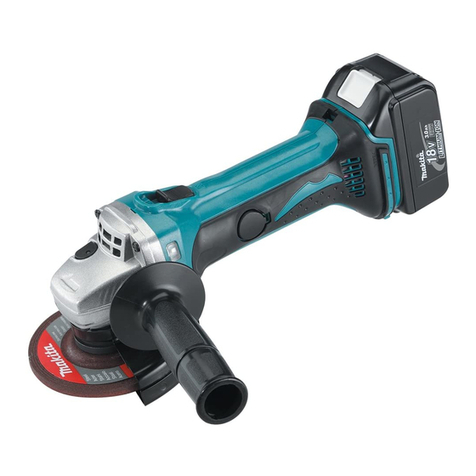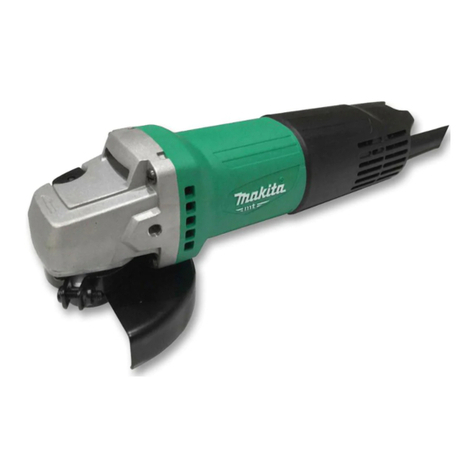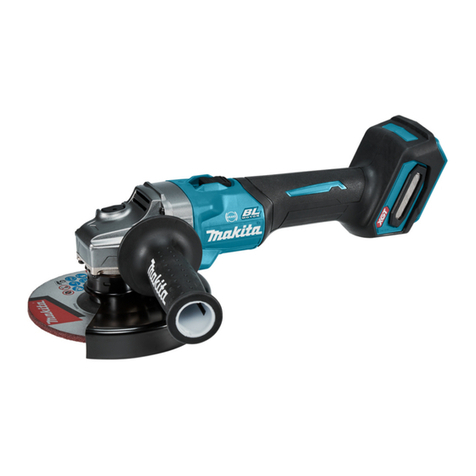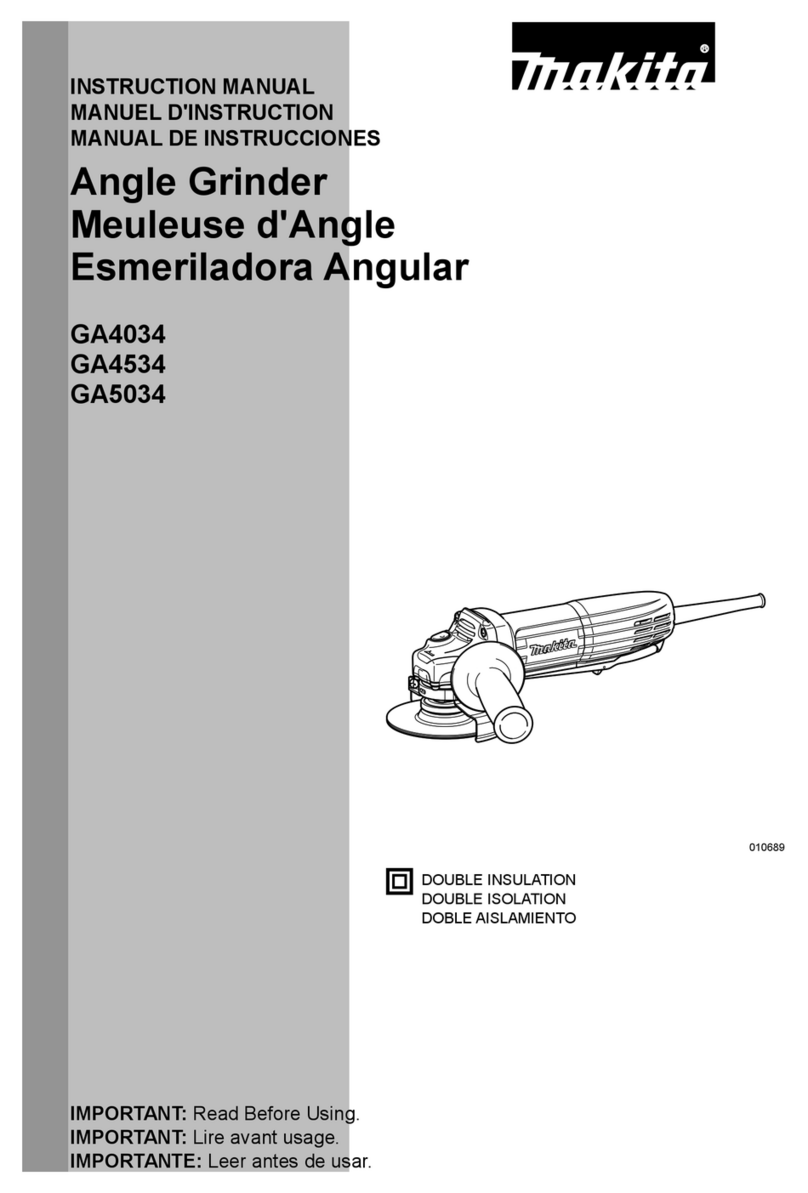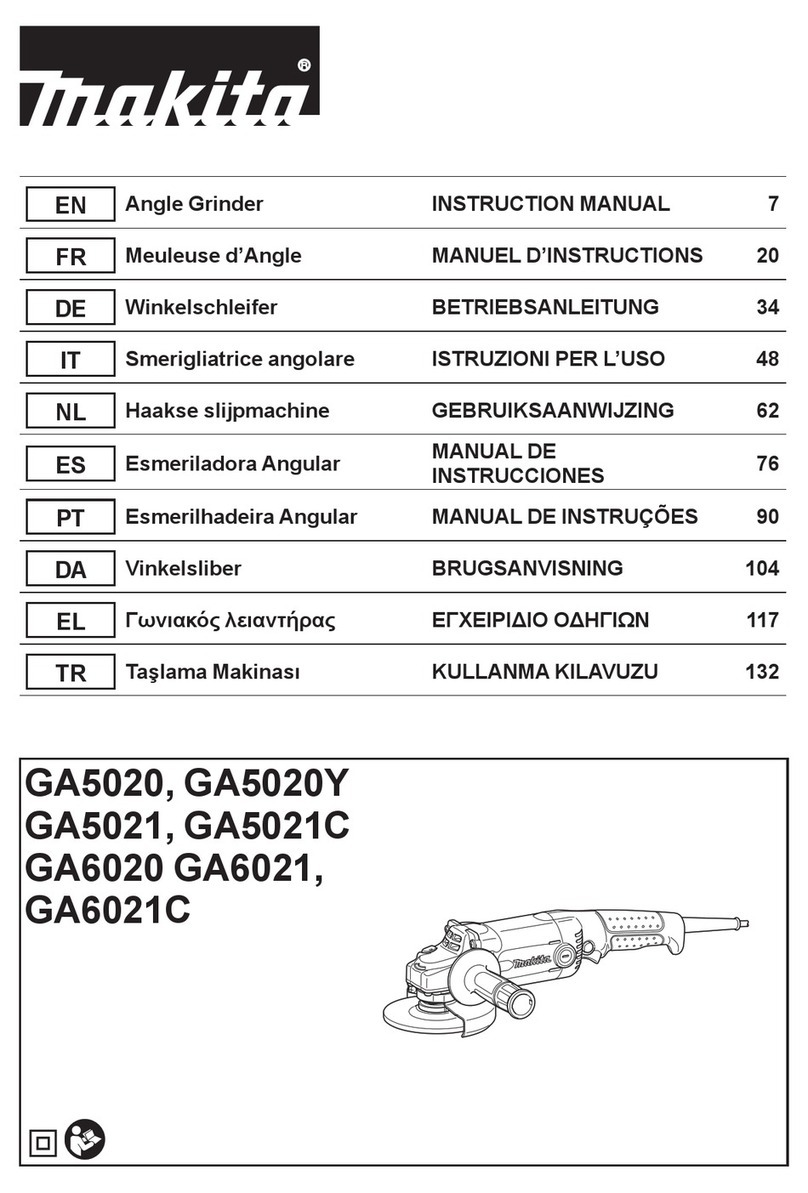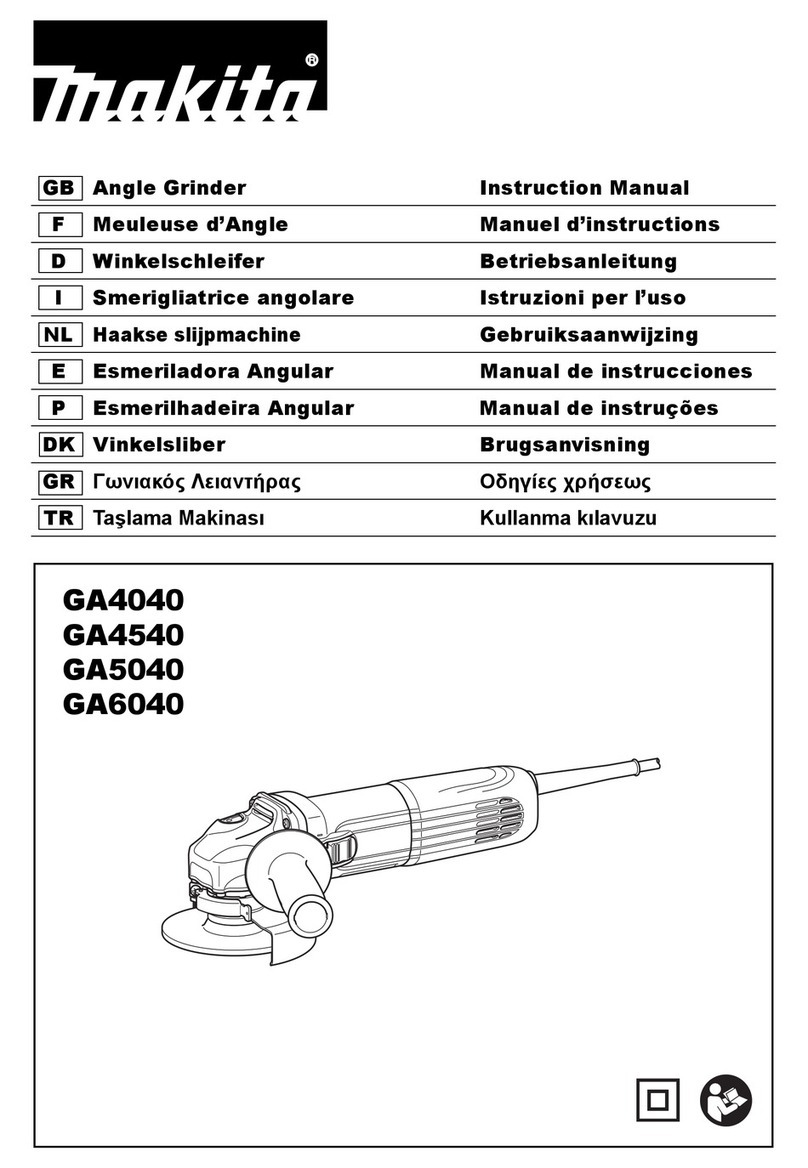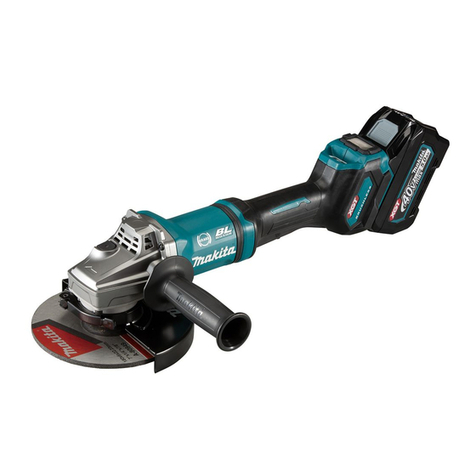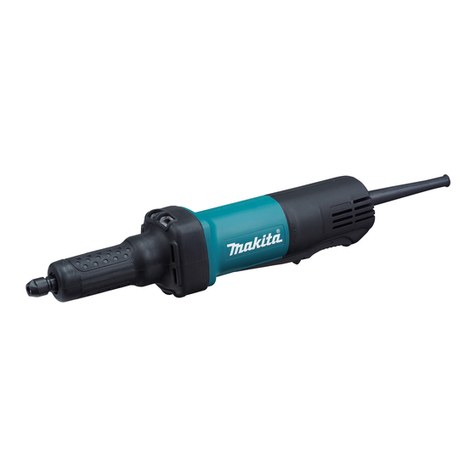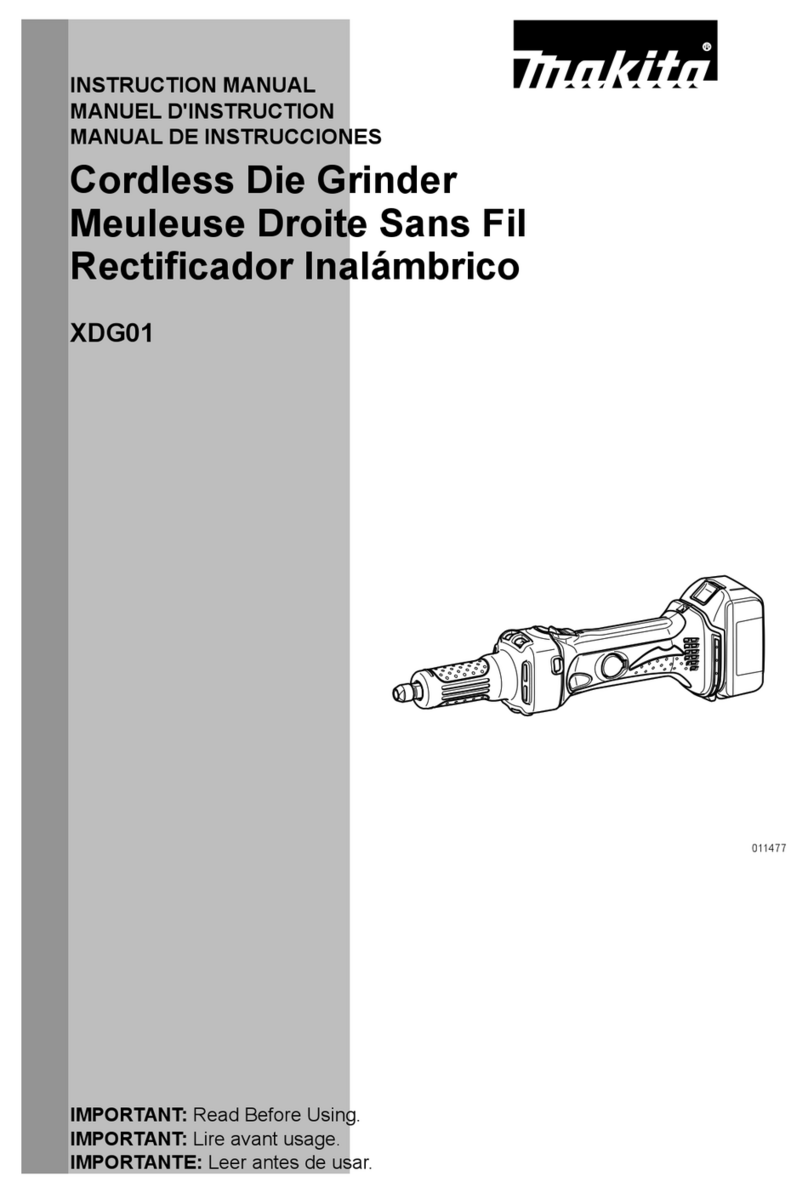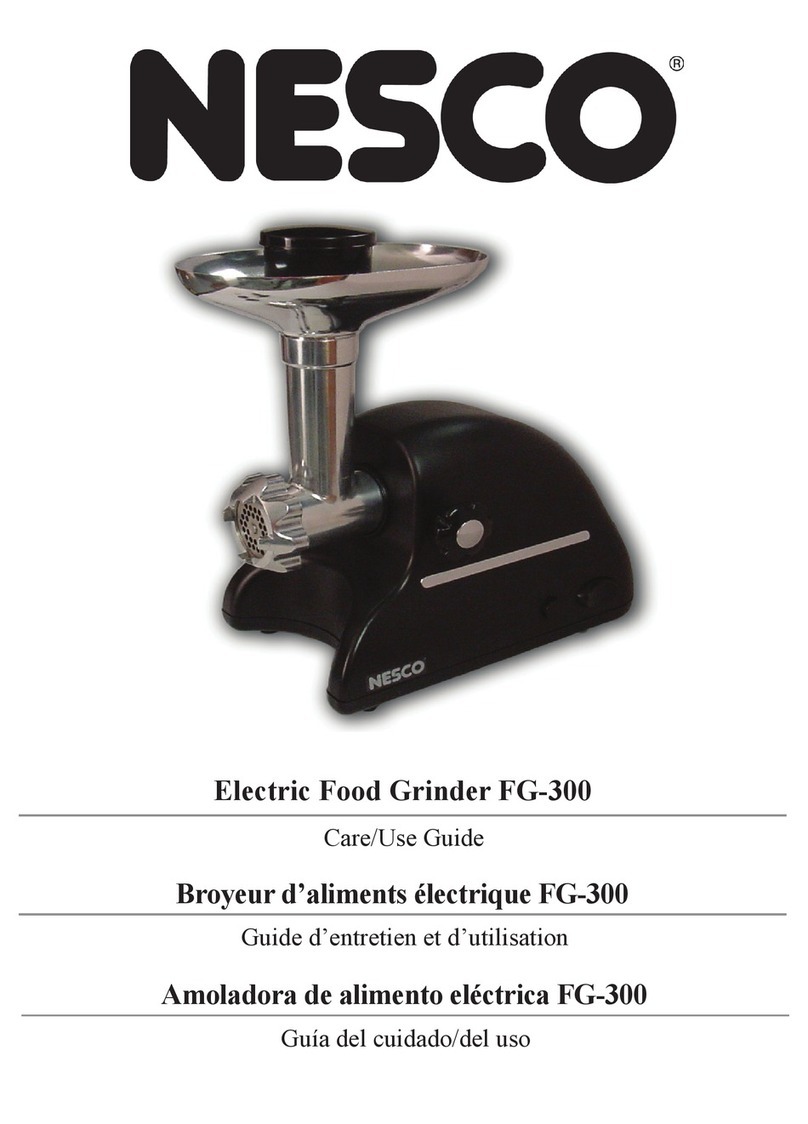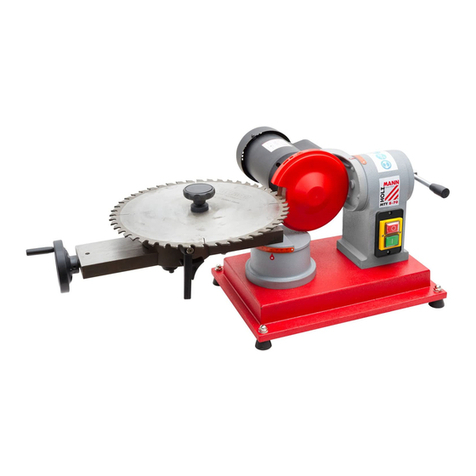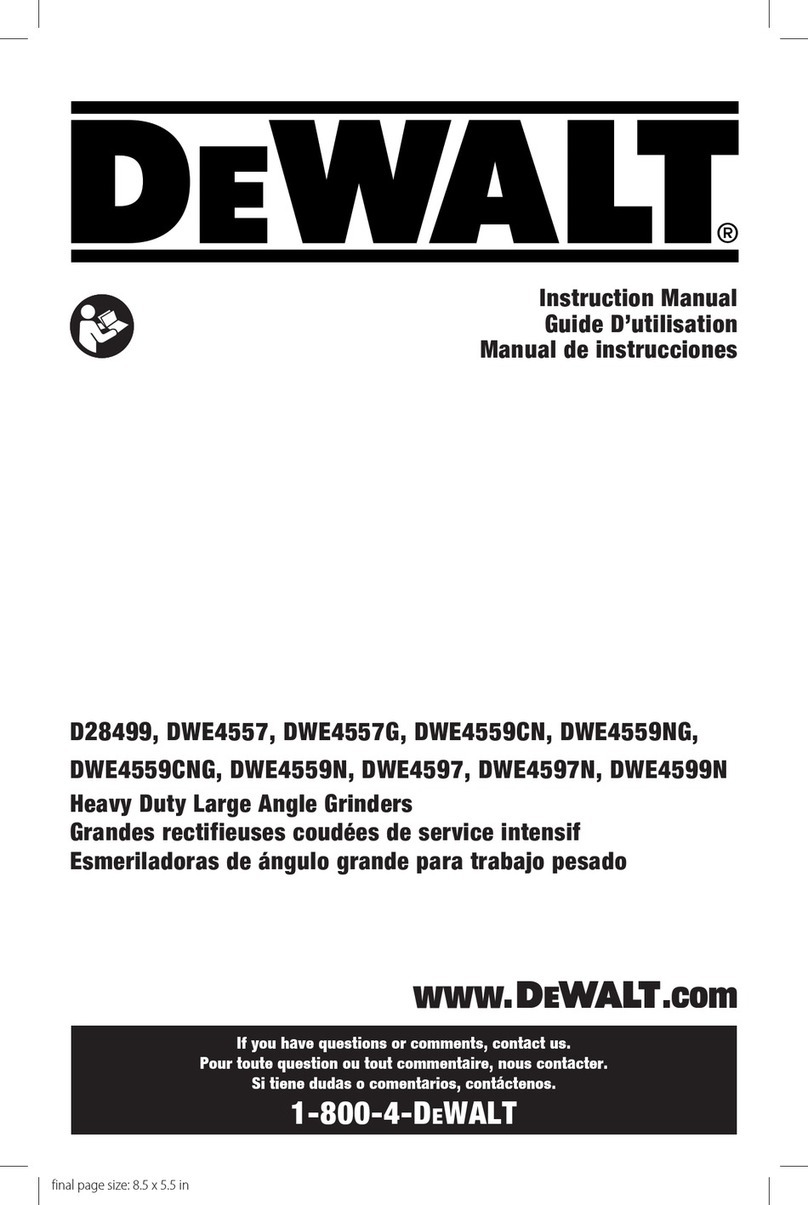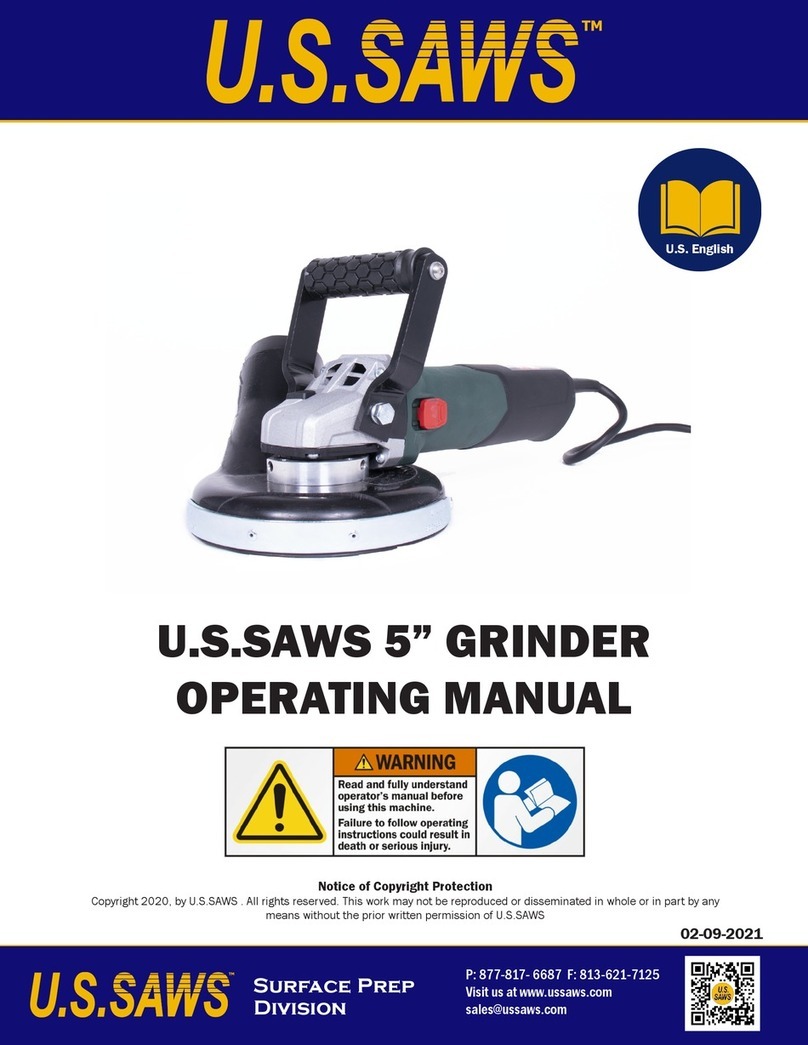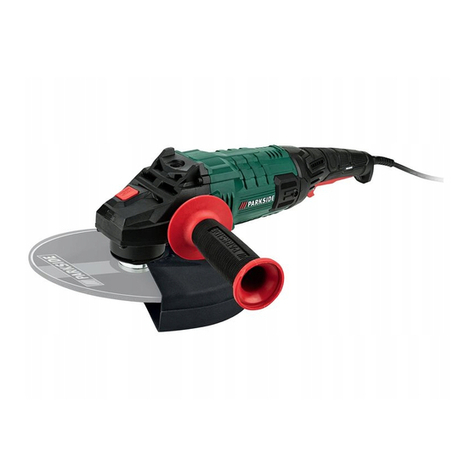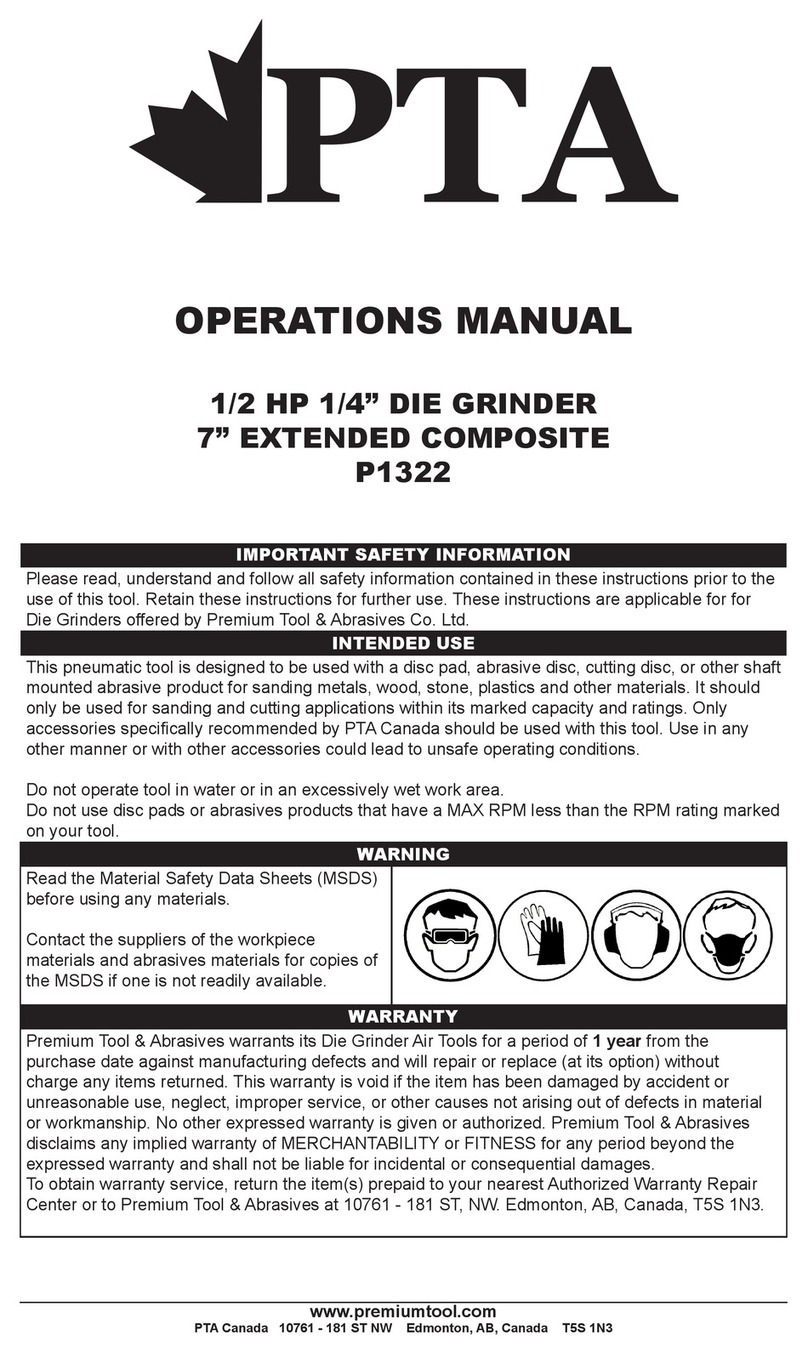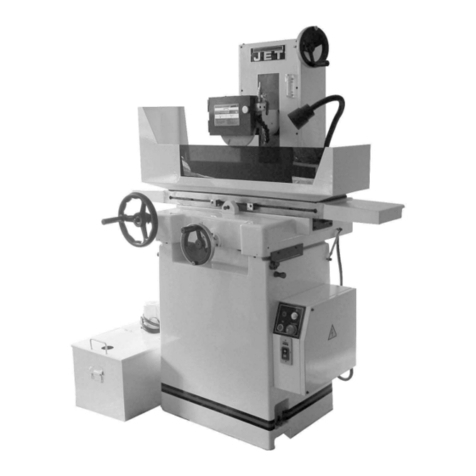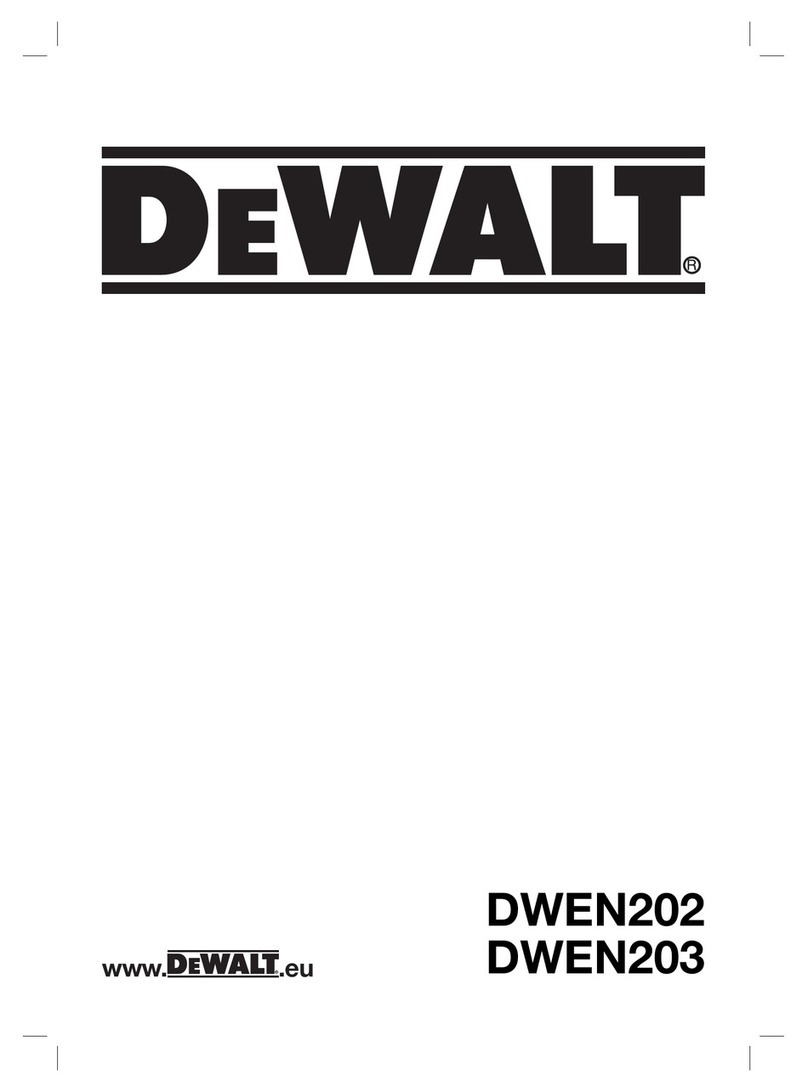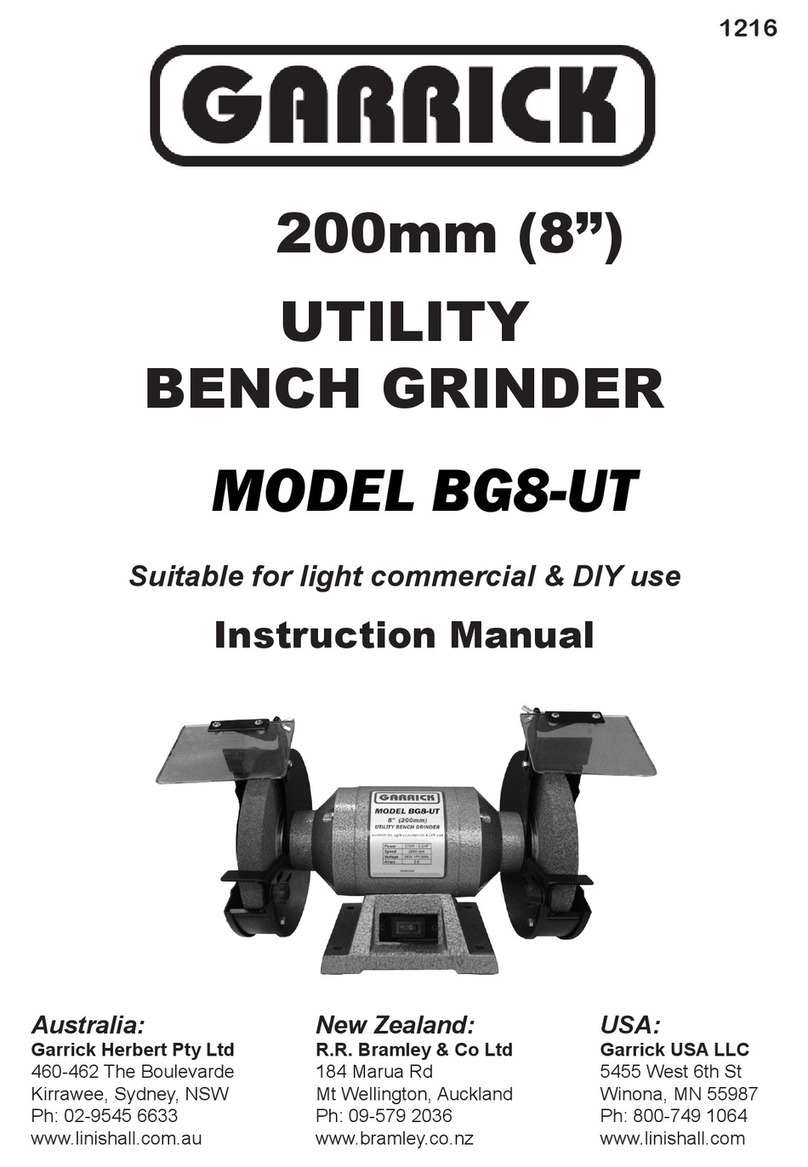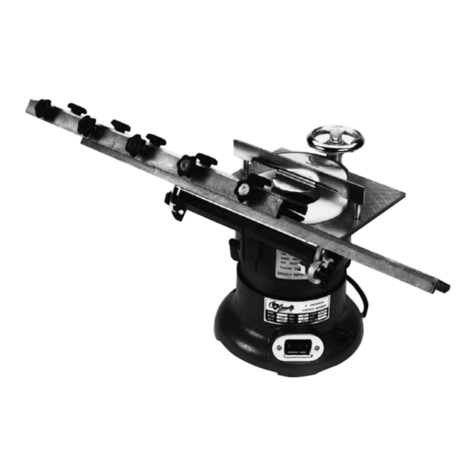6ENGLISH
Battery tool use and care
1.
the manufacturer.
2. -
nated battery packs.
3. When battery pack is not in use, keep it away
from other metal objects, like paper clips,
coins, keys, nails, screws or other small metal
objects, that can make a connection from one
terminal to another.-
4. Under abusive conditions, liquid may be
ejected from the battery; avoid contact. If con-
liquid contacts eyes, additionally seek medical
help.
irritation or burns.
5. Do not use a battery pack or tool that is dam-
6.
excessive temperature.-
7. Follow all charging instructions and do not
charge the battery pack or tool outside the
-
tions.
Service
1.
repair person using only identical replacement
parts.
tool is maintained.
2. Never service damaged battery packs. Service
manufacturer or authorized service providers.
3. Follow instruction for lubricating and chang-
ing accessories.
Cordless grinder safety warnings
Safety Warnings Common for Grinding, Sanding,
Wire Brushing, or Abrasive Cutting-Off Operations:
1. This power tool is intended to function as a
grinder, sander, wire brush or cut-off tool.
Read all safety warnings, instructions, illus-
power tool. Failure to follow all instructions listed
2. Operations such as polishing are not rec-
ommended to be performed with this power
tool. Operations for which the power tool was not
-
3. -
cally designed and recommended by the tool
manufacturer.
safe operation.
4. The rated speed of the accessory must be at
least equal to the maximum speed marked on
the power tool.
5. The outside diameter and the thickness of your
accessory must be within the capacity rating
of your power tool.
6. Threaded mounting of accessories must
match the grinder spindle thread. For acces-
mounting hardware of the power tool will run out of
of control.
7. Do not use a damaged accessory. Before each
use inspect the accessory such as abrasive
wheels for chips and cracks, backing pad for
cracks, tear or excess wear, wire brush for
loose or cracked wires. If power tool or acces-
sory is dropped, inspect for damage or install
an undamaged accessory. After inspecting and
installing an accessory, position yourself and
bystanders away from the plane of the rotating
accessory and run the power tool at maximum
no-load speed for one minute. Damaged acces-
time.
8. Wear personal protective equipment.
Depending on application, use face shield,
safety goggles or safety glasses. As appro-
priate, wear dust mask, hearing protectors,
gloves and workshop apron capable of stop-
ping small abrasive or workpiece fragments.
cause hearing loss.
9. Keep bystanders a safe distance away from
work area. Anyone entering the work area
must wear personal protective equipment.
area of operation.
10. Hold the power tool by insulated gripping
surfaces only, when performing an operation
where the cutting tool may contact hidden
wiring.
could give the operator an electric shock.
11. Never lay the power tool down until the acces-
sory has come to a complete stop.
12. Do not run the power tool while carrying it at
your side.
13. Regularly clean the power tool’s air vents.
motor’s fan will draw the dust inside the housing
and excessive accumulation of powdered metal

